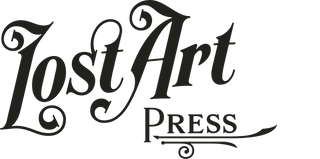Carving the Acanthus Leaf
by Mary May
You can download an excerpt from this book here.
Learning to carve the acanthus leaf is – for carvers – like a pianist learning a Chopin étude, a young oil painter studying the genius of Rembrandt or an aspiring furniture maker learning to cut dovetails by hand.
For carvers, especially those who focus on Classical Western ornament, there comes a time they will inevitably encounter the acanthus leaf, learn it, master it and finally incorporate it into their own designs.
“Carving the Acanthus Leaf” by Mary May is a deep exploration into this iconic leaf, which has been a cornerstone of Western ornamentation for thousands of years. May, a professional carver and instructor, starts her book at the beginning. She covers carving tools and sharpening with the efficiency of someone who has taught for years. Then she plunges the reader directly into the work.
It begins with a simple leaf that requires just a few tools. The book then progresses through 13 variations of leaves up to the highly ornate Renaissance and Rococo forms. Each lesson builds on the earlier ones as the complexity slowly increases.
One remarkable aspect of the book is how May has structured each chapter. Each chapter begins with a short discussion of how this particular leaf appears in architecture or the decorative arts, with photos May has taken from her travels worldwide. Then, you learn how to draw the leaf from scratch. Though you are provided with a full-size or scaled drawing of each leaf, May insists that drawing the leaf makes it easier to carve. Each step of the drawing process is illustrated in detail.
As May explains how to carve the leaf, she augments each step with multiple photos and illustrations that show where and how each tool should move through the work. The result is that each leaf can have as many as 100 photos and illustrations of each step of the carving process.
In addition to the intense instruction, May provides a short essay between every chapter that illustrates her journey from a young pumpkin carver to the world-renowned carver she is today. The overall effect is like apprenticing with a master carver, with both the demanding instruction and the personal experiences that make woodworking a rich craft.
“Carving the Acanthus Leaf” is manufactured to survive many hours of use in the shop. The heavy paper is glued and sewn so the book will lie flat on your benchtop without the pages coming loose. The pages are protected by cloth-covered hardboards and a tear-resistant dust jacket to protect its contents. This is a permanent book – produced and printed entirely in the U.S.
Contents
Foreword vii
Introduction xiii
Acknowledgments xvi
1: The Acanthus Leaf 4
2: Getting Started with Woodcarving 18
3: Getting Started 36
4: The Basic Acanthus Leaf 58
5: The Basic Acanthus Leaf With a Twist 74
6: Acanthus Leaf on a Moulding 94
7: Rosette 112
8: Acanthus Leaf on a Cabriole Leg 126
9: Acanthus Leaf on a Turning 144
10: Acanthus Leaf on a Bracket 162
11: The Italian Renaissance Leaf 186
12: Italian Renaissance With an Added Twist 212
13: Scandinavian-style Leaf 226
14: The Greek Acanthus Leaf 246
15: The French Rococo Leaf 266
16: The Baroque Leaf 288
Afterword 312
Bibliography 315
About the Author

Mary May has been woodcarving since 1991. After discovering the beauty of woodcarving while traveling in England and Europe during her early college years, she returned home to Minneapolis, where she spent three years studying with Konstantinos Papadakis, who taught her the traditional, old-world techniques and styles of classical European woodcarving. She returned to Europe, first to Greece and then to the City and Guild's College in London, England to study from other carvers. Back in the U.S., she began taking on small commissions but grew to carve classically carved church furniture, fireplace mantels, period furniture reproductions, antique repair, and sculptures. She taught woodcarving at schools and woodworking clubs throughout the U.S. and in Germany. In 2012, she started Mary May's School of Traditional Woodcarving.
You can read more about Mary in our full profile.







